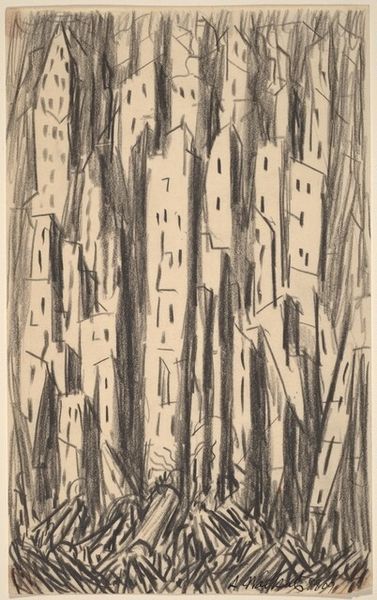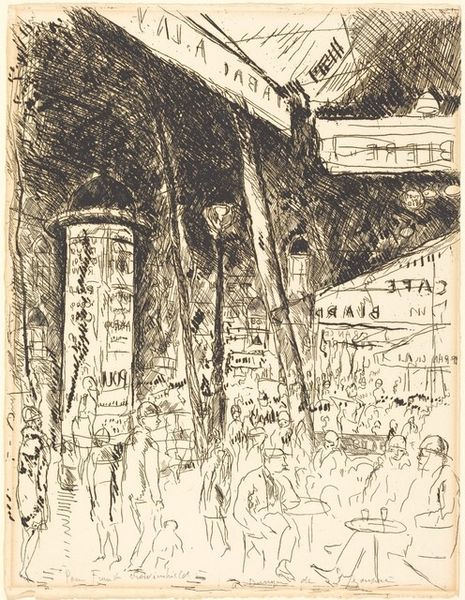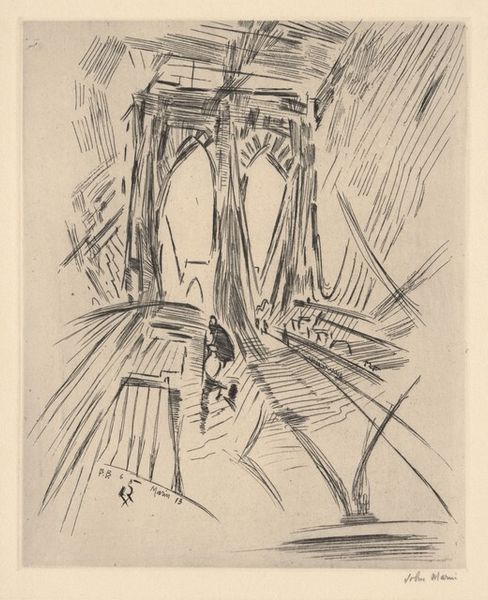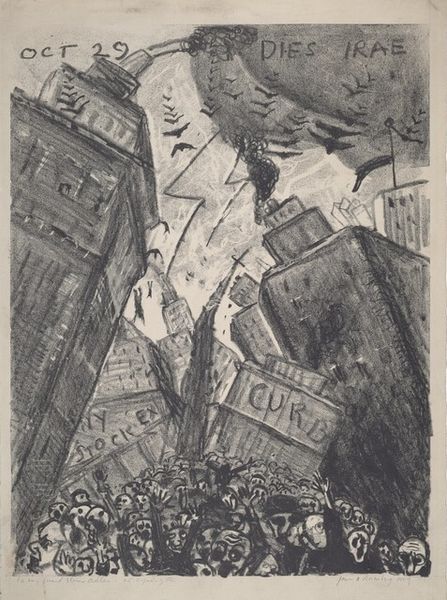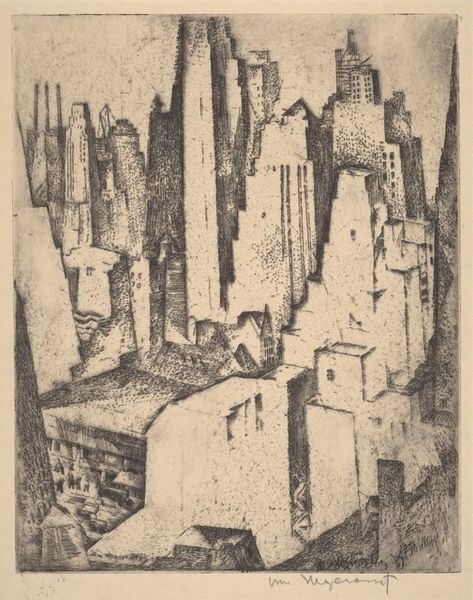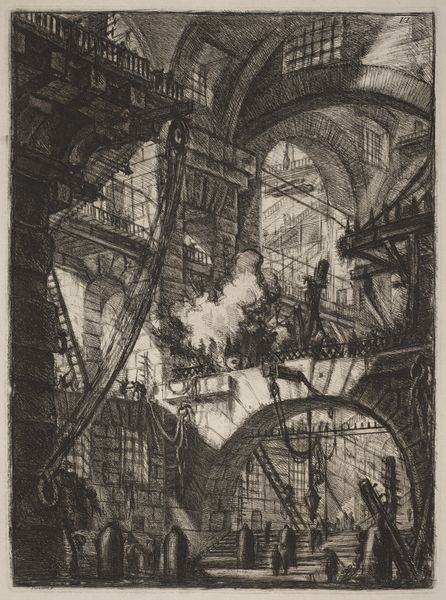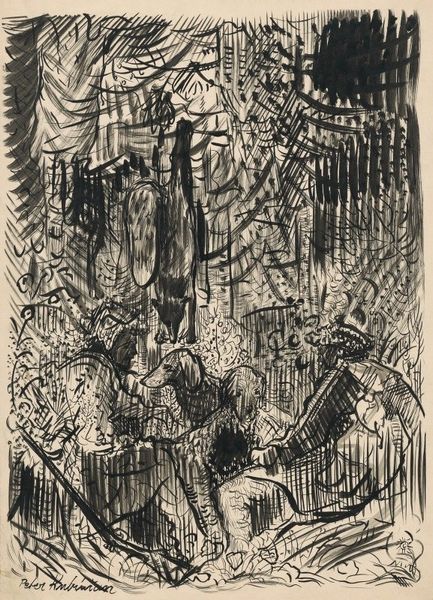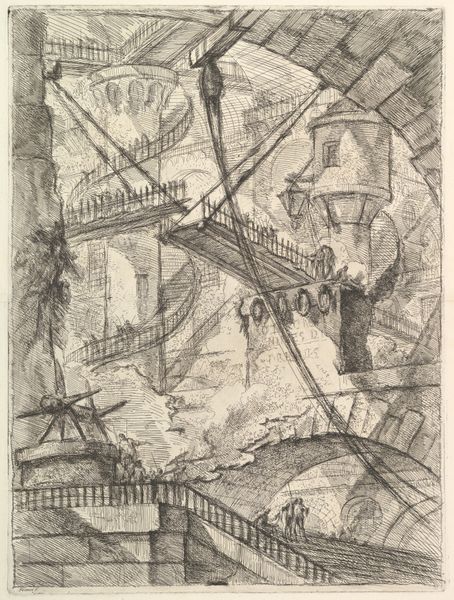
drawing, print, etching
#
drawing
# print
#
etching
#
german-expressionism
#
geometric
#
line
#
cityscape
Dimensions: image: 26.99 × 20 cm (10 5/8 × 7 7/8 in.) sheet: 42.23 × 32.07 cm (16 5/8 × 12 5/8 in.)
Copyright: National Gallery of Art: CC0 1.0
Curator: Lyonel Feininger's 1912 etching, "The Gate," masterfully employs linear expression to depict a cityscape. Editor: There's an intense angularity to this image. It's fractured and dynamic, evoking a real sense of disquiet and tension. Curator: Indeed. Notice the pronounced use of intersecting lines creating crystalline planes, a visual language derived from Cubism, filtered through a distinctly Expressionist lens. It fragments the urban landscape into these facets. Editor: I’m struck by how the etching process itself contributes to this feeling. The fineness of the lines contrasts so sharply with the monumental gate and conveys the detailed, perhaps even tedious, labor involved in creating this cityscape from so many individual strokes. Curator: That interplay between line and form is pivotal. The convergence of lines draws the eye upwards, towards the radiant sun, perhaps a symbolic beacon amidst the city's turmoil. What I find intriguing is how these geometric forms are inherently modern, yet he’s depicting this historical archway. Editor: Exactly, the repetitive geometric facets used across different surfaces emphasize the inherent labor invested. Think about the laborers and craftspeople actually building structures like this! Feininger presents not just the image but its making—challenging the division between high art and everyday labor. Curator: That's a valid reading. The high contrast certainly enhances the composition. It speaks to a modern alienation, refracted through sharp forms. The structure isn’t presented as simply architectural; the formal relations create emotional weight. Editor: And maybe it reflects the state of Europe at that moment. This isn't simply representing space. Feininger's drawing, made in an increasingly divided world, really showcases labor, technique, and structure to create a uniquely immersive visual experience. Curator: A powerful convergence of form, technique, and cultural context, making it such an important statement. Editor: A testament to Feininger’s vision and craft; it truly underscores how art's materials, techniques, and labor imbue it with resonant historical meaning.
Comments
No comments
Be the first to comment and join the conversation on the ultimate creative platform.


